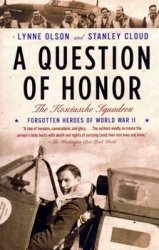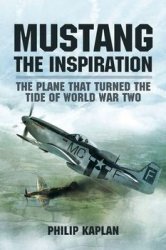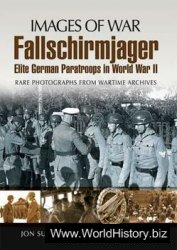The defenders had had time to fortify Grozny. They dug trenches, laid mines, built fortified positions inside some buildings and booby-trapped others. However, the Russians were also far more prepared for the latest battle of Grozny. Chief of the General Staff General Anatoly Kvashnin, who had been responsible for the initial and disastrous New Year's Eve attack on Grozny in 1994, was determined to atone for his earlier failure. Beyond a few skirmishes and probing raids, though October, November and much of December, the Russians confined themselves to bombardments using aircraft, Scud and OTR-21 ballistic missiles, artillery and TOS-1 fuel air explosive rockets. Only some 40,000 civilians were left in the ruins of the city, along with perhaps 2,500 rebels under Aslambek Ismailov. On 5 December, the
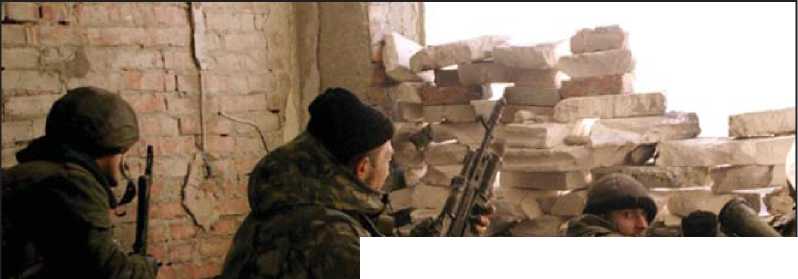
Grozny, 22 January 2000: MVD VV personnel fire on Chechen positions. The figure in the centre has a GP-30 grenade launcher attached to his AK-74 rifle, providing useful additional firepower in short-range combats as it has an effective range of some 150 metres. Just visible to the right, one man carries a disposable RPG-26 anti-tank missile, commonly used to destroy rebel positions inside buildings. (© Vladimir Suvorov/epa/Corbis)
Russians starting dropping leaflets, urging those remaining to leave by 11 December, while opening up a safe corridor for them. Although many Chechens mistrusted this offer, not least as the Russians checked the documents of those leaving, there was no mistaking that the Russians were preparing for an assault.
They mustered some 5,000 troops for the assault itself: the 506th Motor Rifle Regiment, two MVD VV brigades and in total some 400-500 Spetsnaz, who were particularly used for reconnaissance, sniper and counter-sniper duties. They were backed by extensive artillery elements and OMON (who would be used for rear-area security). In what was a portent of the future, they were also supported by some 2,000 pro-Moscow (or at least anti-rebel) Chechen fighters in a militia commanded by Beslan Gantemirov, a convicted embezzler whom Yeltsin had pardoned in return for his becoming the mayor of Grozny in the new regime. He recruited a force of volunteers, patriots, mercenaries, opportunists and criminals whom the federals trusted little - the MVD only issued them out-dated AKM-47s from reserve stocks, which had been phased out of military use in the 1980s - but who nevertheless knew the city and were fierce and flexible, like their ChRI counterparts.
The siege forces started moving in on 12 December, infiltrating reconnaissance elements to draw rebel fire and then hammering the rebels with airstrikes and artillery. By the end of the next day, Khankala airbase was back in federal hands. One exploratory push into Minutka Square by the 506th was ambushed, although the new T-90 tank proved much more resistant to RPGs than the old T-80 had, one surviving seven hits. The fighting was fierce: about a quarter of the soldiers of the 506th were killed or wounded, so it was withdrawn and replaced with fresh troops of the 423rd Guards 'Yampolsky' Motor Rifle Regiment. In the main, though, the Russians were content to draw their ring slowly closer. That put the pressure on the Chechens to seek to break out or distract the federal forces with other attacks. This they did, in one case managing to take back the outlying village of Alkhan-Kala, but each time they did so, they took casualties they could not afford and, thanks to the siege of the city, could not replace.
On 15 January, Kazantsev decided the ground had been prepared well enough. Federal forces moved into the city along three axes, facing both tough rebel resistance from the 2,500 or so remaining defenders as well as the problems in trying to move through a city not only liberally strewn with mines, traps and unexploded ordnance but also pounded into rubble. This, along with the Russians' new-found caution, kept advances slow. Even so, the rebels were able frequently to infiltrate the Russian lines, lay more mines and stage lightning attacks, in one case managing to kill Major-General
Mikhail Malofeyev, commander of the Northern Group, in the assault. Nevertheless, the best they could do was slow the Russian advance. By the end of the month, running low on men, ground to retreat into and ammunition, the rebel commanders opted to abandon the city, regroup at the village of Alkhan-Kala south-west of Grozny and make for the highlands in the hope of regrouping and following the same trajectory as in the First Chechen War. Already, though, the new divisiveness of the rebel movement was becoming visible, as Ruslan Gelayev - following a disagreement with the jihadist elements of the rebel command - withdrew his forces from the city, allowing them to slip out in small groups all around the perimeter.
At the end of January, as federal forces continued to grind into the centre of Grozny, the rebels attempted to break out of the city under the cover of a heavy storm. Some tried
Grozny, 21 February 2000: a Russian sniper patrols the streets after the second Russian conquest of the city In contrast to the first invasion, this time at least Russian forces had adequate winter clothing and their snipers had been given extra training to be effective in an urban environment. (EPA)
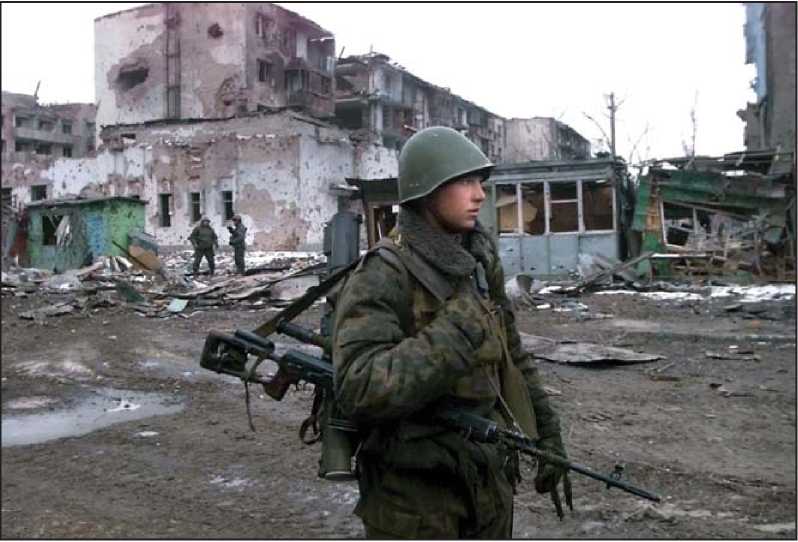
To bribe their way through Russian lines, others to slip out hidden among groups of refugees, while others tried to use stealth when possible, firepower when not. This would be a disastrous and humiliating flight, as rebels blundered into minefields outside Alkhan-Kala, were scoured by artillery-fired cluster rounds (in some cases bringing Russian fire down onto civilians, too) and were harried by helicopters and Spetsnaz.
Of the perhaps 1,500 rebel fighters left in Grozny, some 600 were killed, captured or wounded in the retreat, including Ismailov. The survivors largely scattered, some simply drifting home, most heading south.
Meanwhile, on 6 February the Russian formally declared Grozny 'liberated'. Even so, the city was in ruins and it would take a month for OMON and Gantemirov's militia to mop up a few remaining hold-outs in the city and a year for the bodies from the battle to be found and buried. Although on 21 February the traditional Defender of the Fatherland Day parade was held in central Grozny, supposedly as a mark of the return of normalcy, this would be a brutal, vengeful time, as apartments were looted, men accused of being rebels were dragged off to a filtration camp (or simply shot in the street) and stray rebels continued to mount bomb and sniper attacks. The 21,000 civilians remaining of the city's Soviet-era population of 400,000 were often forced to camp out in the ruins, eating whatever they could scavenge.




 World History
World History
